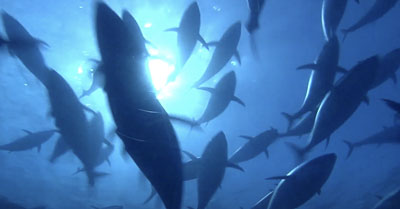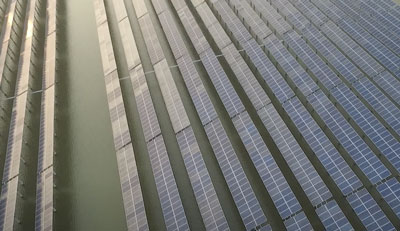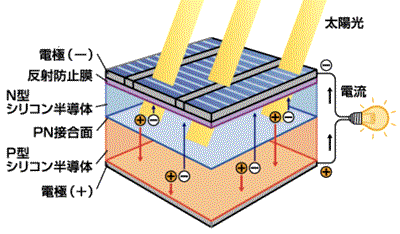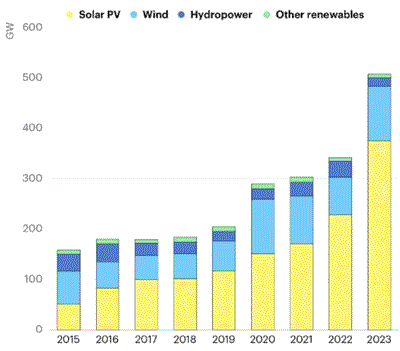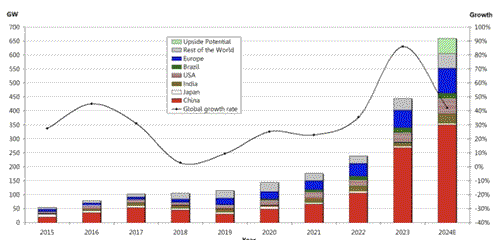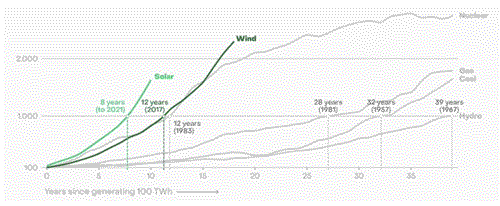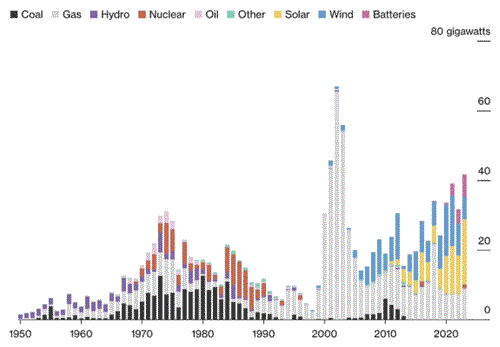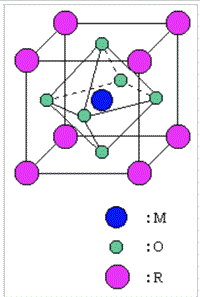Title |
The World's Largest Floating Solar Farm |
世界最大の水上太陽光発電所 |
Why |
- Solar power generation is a clean energy source, but it has many issues to be solved, such as the large initial investment, problems with selecting proper installation sites, easiness to connecting to the power grid, as well as even the long payback period. However, reflecting from the recent technological innovation of the solar panels manufacturing technology, large-scale floating solar power generation, together with assoicatied industries, will be a new game-changer in green power generation.
- Advanced challenges have already been reported in some places such as China, South Korea, the Netherlands, etc., and it is expected that this could become a new breakthrough technology based on new ideas not only in green power generation, but also providing aquaculture and protection from severe weather, etc.
|
- 太陽光発電は、クリーンエネルギーであるが、その初期投資の大きさ、設置場所選定問題、電源接続問題、さらには費用回収期間など課題も大きかったが、太陽光パネル自体の技術革新とそれ付随する産業などをうまく活かした大規模な水上太陽光発電がゲームチェンジャーになろうとしている。
- すでに中国、韓国、オランダなどでの先進事例が報道されており、発電のみならず養殖漁業や荒天対策など複合的なグリーン発電コンプレックスは、新たな発想に基づく画期的な技術と着想の成果と言える。
|
>Top 1. 世界盛大の水上太陽光発電所;
- https://www.youtube.com/watch?v=DAEGNL56sEM
- Roughly 150km south of Shanghai a gigantic civil engineering experiment is underway. That's causing international ripples in more ways than one. Potentially capable of providing 50% of the worlds' ongoing energy needs, the clean and green technology being trialled in China's Hángzhōu Fēnglíng Electricity Science solar park. Technology solar park will also provide employment and nutritious food for locals.
- So what are the main benefits of floating solar? How likely is it to be rolled out worldwide as a meaningful solution to the energy crisis? Join us today as we take to the water for a voyage into the world's largest floating solar farm.
- As our civilization starts to meaningfully grapple with*1 the essential transition over to clearer energy sources, lots of ambitious solutions are proposed. From colossal*2 offshore wind farms, to vast hydroelectric energy plants. One newish*3 idea is so obvious it almost seems a bit ridiculous. Solar panels are clean, efficient and improving all the time, but they need a large footprint, taking up land near population centres that could otherwise be used for housing or agriculture.
■1
|
1. :
- 上海の南約 150 km で巨大な土木工学実験が進行中である。これは様々な意味で国際的な波紋を引き起こしている。これは世界の現在のエネルギー需要を供給できる可能性がある環境に優しい技術であり、中国の杭州风铃電力太陽光発電パークで試行されている。太陽光発電パークの技術は地域住民に雇用と栄養価のある食料も提供する。
- では水上ソーラーの主な利点は何か? エネルギー危機に対する意味のある解決策として、世界中で展開される可能性はどれくらいあるだろうか? 今日、我々と一緒に各地を訪問し、世界最大の水上ソーラーファームを見ていく。
- 我々の文明がよりクリーンなエネルギー源へ真剣な移行に取り組み始めており、多くの野心的な解決策が提案されている。巨大な洋上風力発電所から広大な水力発電所まで。ある新らたな*4 アイデアはあまりにも明白で、少しばかげているようにも思える。太陽光はクリーンで効率的で、常に改善されているが、大きな設置面積が必要とし、本来は住宅や農業に使用できる人口密集地の近くの土地を専有していまう。
|
- 太陽光発電 Photovoltaic energy: EnergyDemerit: 1) 初期費用高い→回収費用, 2) 設置面積・方向、3) 発電量が気候・天候に左右、4) エネルギー効率 7-18%; 130kWh/m2、5) 維持管理、6) 施工不良、7) Grid接続
- 太陽熱発電 Solar thermal energy: 1)初期費用安い、2) 蓄熱可能 (熱交換器)夜間発電可能、3) エネルギー効率大40-60%; 600kWh/m2、4)燃料不要, 5) 低緯度向き2MWh/m2
(日本平均1-1.3MWh)
- 効率: 風力発電 30-40%; 水力80%; 地熱20%; 原発 33%
- 引っ掛ける; 固着する
- colossal: =gigantic、大量の <colossus=totally dominate a place or area of activity
- やや新しい
|
- But a few big projects around the world have realised that an ideal place to stash*1 big solar array is on the water, especially adjacent to existing hydropower plants. Experts report as many as 10GW of new floating solar farms will come on stream by the middle of this decade. On advantage of putting them on bodies of water already used on existing hydropower is lower transmission costs. If the infrastructure to transmit energy to the grid is already on site, that's obviously a big plus. But it's even cleverer than that. Hydro and solar energy plants are both seasonal - naturally during a dry season, solar is better, but during a wet season, Hydro is more productive. So together, on the whole, they can help even each other out during their respective lean times. It's a kind of no brainer*2.
- Not only will the water cool the solar panels, which happens to make them work more efficiently, but the placement of panels can actually help maintain those all-important water levels at the reservoir. Coverage by the panels naturally reduces the amount of water that evaporates, which is obviously a petty big deal in drought-prone parts of the world. They could also limit algae growth, and offer useful shelter to fish and other water life. So where's the world's biggest floating solar farm?
■2
|
しかし世界中のいくつかの大規模プロジェクトは、太陽光発電パネルを大規模に設置するのに理想的な場所は、水上、特に既存の水力発電所の隣であることに気付いた。専門家は、10GWもの新しい水上 の太陽光発電所が、ここ10年でに稼働すると報告している。既存の水力発電で使用する水域にそれらを設置すること利点の1つは、送電コストが低いことである。電力を送電網に送るインフラがすでに現場にある場合、明らかに大きなプラスとなる。しかし、それよりもさらに賢いやり方がる。水力発電所と太陽光発電所はどちらも季節性があり、当然ながら乾季には太陽光発電の方が優れているが、雨季には水力発電所の方が生産的である。。全体としては、両方を一緒に活用することで、それぞれの不利な時期に相互補完することができる。これは考えるまでもないことである*5。 |
- stash: store safely in a hidden place
- no-brainer: 米話 誰でもできること
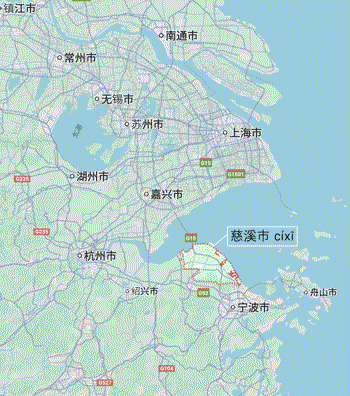 |
- Covering some 300 hectares across the Chánghé*1 and Zhōuxiàng*2 reservoirs in Cíxī*3, Zhèjiāng*4 province, China, the Hángzhōu Fēnglíng*5 Electricity Science Technology solar farm presently holds the title. Built in two phases - a 300 GWH section completed in 2017, that alone powers some 100,000 homes, a later 120 MW tranche opened a little over a year ago costing about$100m - employs some pretty innovative technology. Not least the inverters - kit designed to convert the variable direct current out put to photovoltaic panels into a useful alternating current to be fed into the electrical grid and in turn to your home. Inverters here need to be designed to cope with wet and sometimes choppy*9 conditions.
- In the case of the giant Hángzhōu Fēnglíng plant, Chinese inverter maker Shēnzhèn*10 Kstar Science Technology provided its catchily named GSL2500C-ML and GSL1250 sealed inverters for the job. Collectively, the two-phase project now generated some 352 million KWH, which should generate about $45million dollars a year in revenue. Moreover, the giant complex - which required the building of two new 110-kV booster stations by the state-owned Grid Corp of China, and nearly nine miles of cable - is actually helping the local economy and marine environment. How?
■3
|
- 中国浙江省慈渓市にある长河貯水池*1と周巷貯水池*2にまたがる約300 haの広さを誇る杭州风铃電力科学技術太陽光発電所が、現在その称号を保持している。この発電所は、2期に分けて建設されており、2017年に完成した300GWH工事部分だけで約10万世帯に電力を供給し、その後の120MWの追加工事は1年ち少し前に開設され、費用は約1億米ドルになる。この発電所では、かなり革新的な技術が採用されている。特に直交変換器は、太陽光発電パネルへの直流出力を、電力網に送り込み、家庭に供給される際に有用な交流電流に変換するよう設計された設備である。ここでの変換器は、雨天や時折の波乱*9の気象条件に対応できるように設計されている。
- 巨大な杭州风铃発電所の場合、中国の変換器メーカーである深圳Kstar Science Technology が、キャッチーな名前の GSL2500C-ML および GSL1250 密閉型変換器を製造した。この 2 段階のプロジェクトは合計で約 352GWH を発電し、年間約45百万ドルの収益を生み出す。さらに、この巨大な施設には、国営の中国送電棒公社による 2 つの新しい 110 kVの中継局と約 9 マイルのケーブルの建設が必要だったが、実際には地域経済と海洋環境に貢献している。どのようにか。
|
- 长河 chánghé
- 周巷 zhōuxiàng
- 慈溪市 cíxīshì
- Zhèjiāng 浙江省
- Hángzhōu: 杭州风铃电力: 浙江市
- 周巷水库 zhōuxiàng shuǐkù; reservoir
- 杭州 hángzhōu; 风铃fēnglíng
- tranche: slice; a portion of money
- choppy: having many small waves; 波立つ
- 深圳 shēnzhèn
|
- The solar panes are spread across the reservoir with enough gaps that light can penetrate and support a healthy subaquatic ecosystem. This means fish can live and thrive, with the added bonus that the panels serve as artificial islands that shield fish from natural predators like birds. Locals can also navigate along carefully laid out channels and, when the fish have reached sufficient size, to reel them in the local and national consumer market. Economic analyses of the set up have estimated the value to the local fishing community in terms of income could reach as high as $5 million, each and every year.
- Overall, with the income from power brought into the equation, it's believed the plant's eye-watering*1 $250 million dollar cost will be recoupled*2 in as little as seven to eight years.
If the technology can be shown to work reliably - and so far it is - this could be a huge game changer in energy generation around the world. A US government study, for instance, has demonstrated that if similar schemes were rolled out across American man-made bodies of water the nation could generate 10% of its national energy needs. And that's without expanding onto natural waterways or the oceans. Worldwide, it's believed as much a 10,600 TWh*3 could be generated annually by water borne photovoltaic - that just means solar - panels. According to 2018 figures by the International Energy Agency, world-wide energy consumption is just over twice that, at 22,300 TWh. And world wide a number of projects are looking to exploit early encouraging results demonstrated by floating solar technology.
■4
|
- 太陽光パネルは貯水池全体に十分な隙間を設けて設置され、光が差し込み、水中の生態系を健全に保つようにしている。つまり、魚が生息し繁殖できるようにする。さらに、パネルは人工島として機能し、鳥などの天敵から魚を守る目的もある。地元の人々は、注意深く敷かれた水路に沿って移動し、魚が十分な大きさに成長したら、地元や国内の消費者市場で釣り上げることができる。この設備の経済分析では、地元の漁業コミュニティへの収入がくは、毎年 5百万ドルに達する見込まれる。
- 全体として、電力収入も考慮すると、発電所建設の巨額な 250百万ドルのコストは、わずか7〜8年で回収できると考えられている。この技術が確実に機能すると証明されれば(これまでは順調だが)、これは世界中の発電に大きな変化をもたらす可能性がある。例えば、米国政府の調査では、同様の計画がアメリカの人工池に展開された場合、国は国のエネルギー需要の10%を発電できることが実証されている。これは、自然の水系や海洋に拡張しない場合の数字である。世界中で、水上太陽光発電によって年間10,600 TWhが発電される可能性がある。国際エネルギー機関の2018年の数字によると、世界のエネルギー消費量はその2倍強の22,300 TWhである。世界中では、いくつかのプロジェクトが、水上太陽光発電技術によって実証された初期の有望な結果を利用しようとしている。
|
- eye-watering: extemely high or large
- recoup: regain sth lost
- 世界太陽光発電容量:
|
- In the Netherlands, a project called Zon-op-Zee - which literally translates to 'The sun in the sea' - has shown that a promising 17kw array can be scaled up in a modular fashion, and crucially absorb unpleasant buffering by the local unpredictable and perennially*1 stormy conditions. Set to eclipse the Hángzhōu Fēnglíng reservoir project covered earlier in this video, a gargantuan 2.1 GW floating solar plant is currently being assembled by the South Korean government near the Saemangeum tidal flats, on the coast of the Yellow Sea. Many time larger than its closest rival, the Korean solar project will cost more than half a billion dollars and come attache to a new start up cluster that, it's hoped, will spur*14 on the net generation of big-thinking green energy initiatives. It can only be hoped that, like the Chinese project, this and other both initiatives will balance futuristic energy needs with the economic and agricultural needs of local people. And if they manage to get it right, it'll send a very powerful signal that floating solar is the future. What do you think?
- Is floating solar an idea so obvious that mankind would be foolish not to give it a go? Let us know in the comments, and don't forget to subscribe for more thoroughly buoyant tech content.
■5
|
- オランダでは、ゾンオプジー(文字通りは、"海の太陽")と呼ばれるプロジェクトが、有望な17kW設備をモジュール方式で拡張できることとして、予測不可能で毎年荒天の地域の状況に対する緩衝効果として吸収できることを示している。さらに、このビデオの前半で取り上げた杭州风铃貯水池プロジェクトを凌ぐ巨大な2.1GWの水上太陽光発電所が、現在、黄海沿岸のセマングム干潟の近くに韓国政府によって建設中である。最も近いライバルより何倍も大きいこの韓国の太陽光発電プロジェクトは、5億ドル以上の費用をかけて、新規プロジェクトクラスターに属し、壮大な構想に基づきグリーンエネルギーによる発電を大いに刺激することが期待されている。中国のプロジェクトのように、このプロジェクトや他の両プロジェクトが、未来のエネルギー需要と地元住民の経済的・農業的ニーズを両立させること期待されている。そして、彼らがそれらがうまく完成すれば、水上太陽光発電が未来であるという非常に強力なシグナルを送ることになる。これらのプロジェクトはどう思われるだろうか?
|
- perennial: 永続する; 多年生の
- spur: 拍車をかける
- buoyant: 浮力のある
|


